6Flowering Crab Apple
Malus purpurea
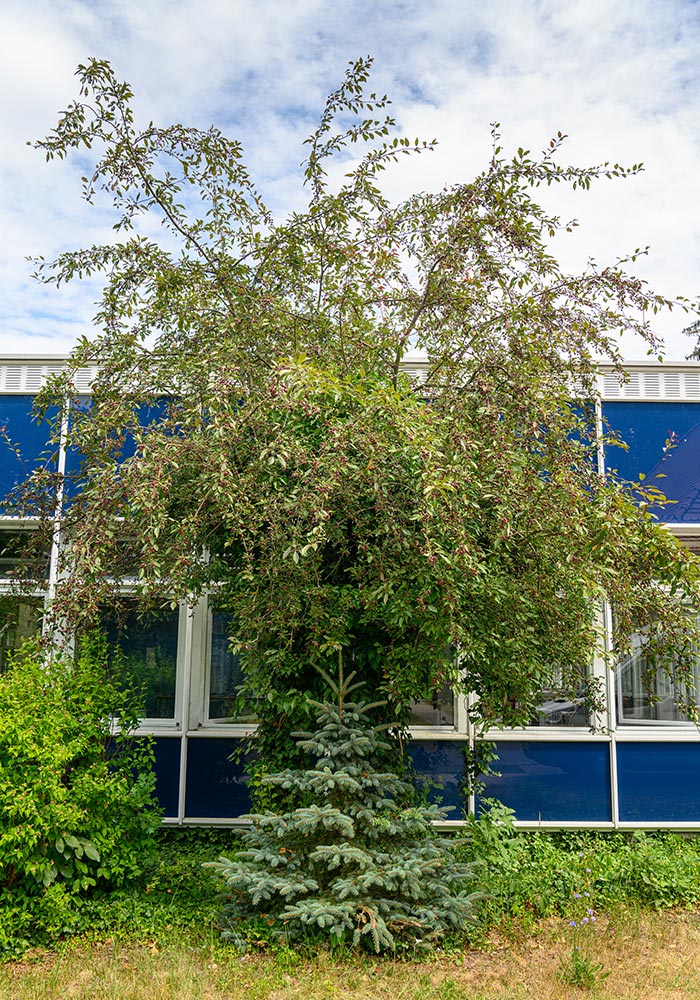
Tree #6 is a purple-flowered ornamental crab apple, also called blood apple, botanical name Malus purpurea, of the rose family or Rosaceae. The blood apple is a 6-to-8-meter, vigorous deciduous tree with dark and sometimes shiny bark and blackish-red branches.
Malus is the Latin name of the apple, and the epithet purpurea is due to the color of its flowers and fruit. Purpurea is Latin for red. The cultivated apple - botanical name Malus domestica - exists in many varieties which can be traced back to hybrids cultivated from different regions. For example, the purple-flowered ornamental crab apple is common in Europe and Asia. It is considered a cultivated hybrid; natural occurrences in the wild have not been documented.
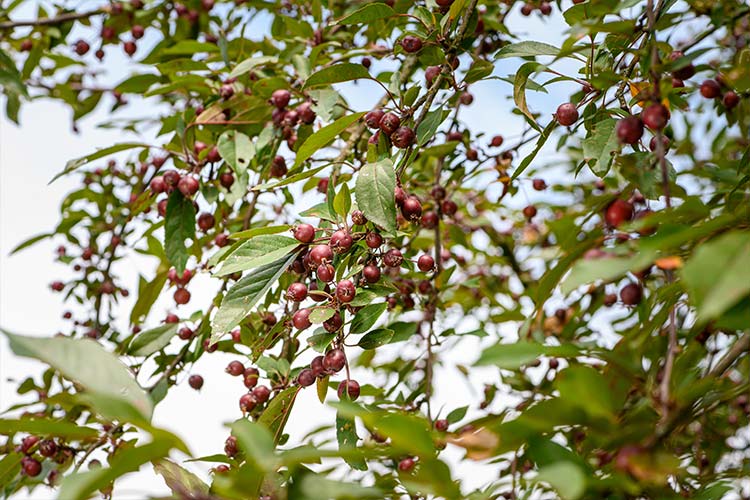
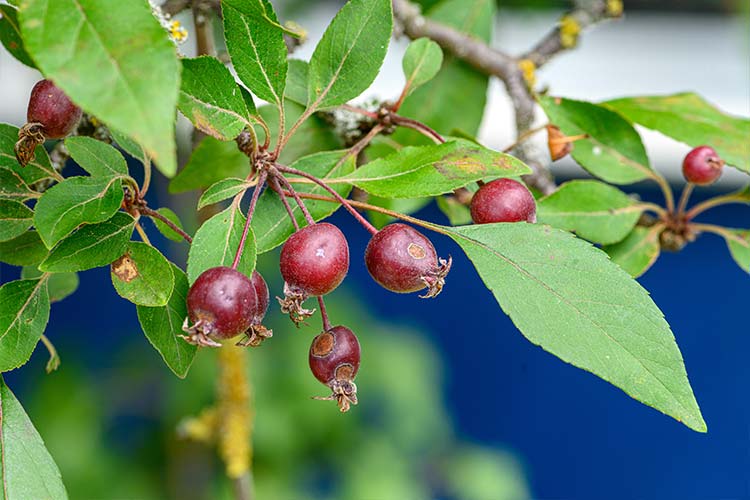
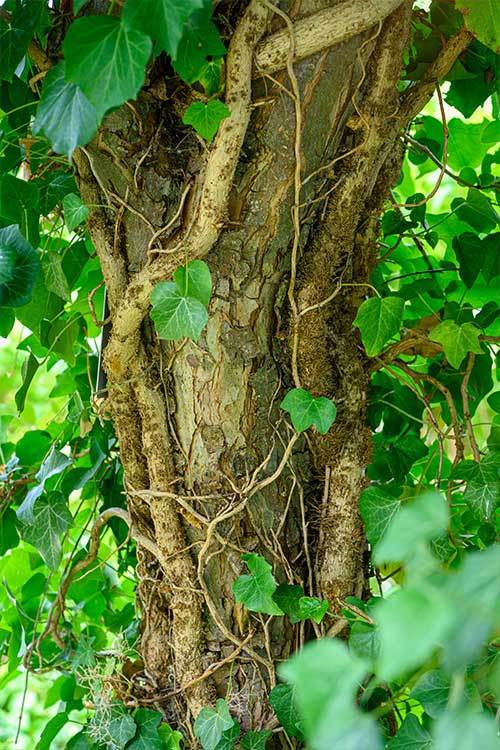
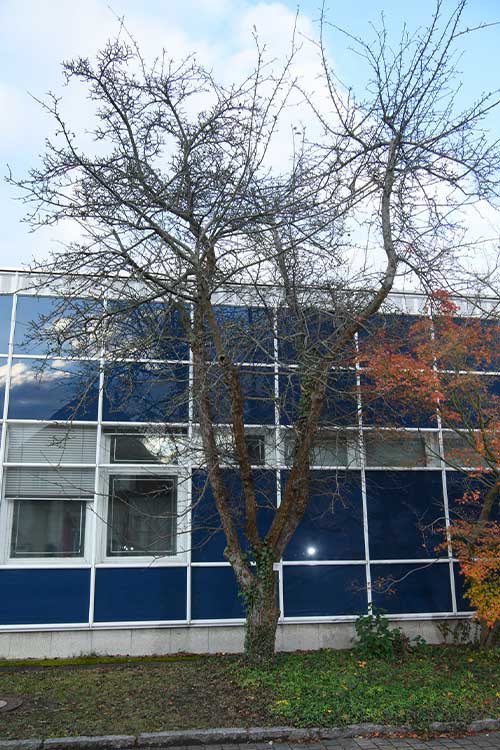
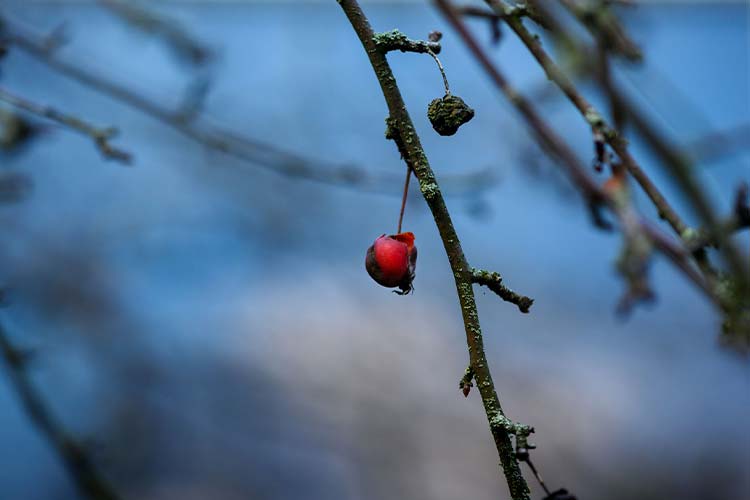
The purple-flowered ornamental crab apple blooms from April to May. Because of its decorative, dark red flowers and striking red fruit, barely three centimeters in size, it is often planted as an ornamental shrub or bee pasture.
It is considered a demanding but adaptable woody plant. It prefers nutrient-rich soils, ideally humus-rich, loamy and slightly moist, slightly acidic to alkaline, in sunny to semi-shady locations. It is heat-loving and usually frost-hardy.
Like its relatives, the fruit of the blood apple is edible. Apples are the Germans' favorite fruit. On average, Germans eat 18 kilos of the cultivated form per year. It contains over thirty vitamins, trace elements and important minerals such as calcium, iron and magnesium.
In general, red apple varieties contain significantly more vitamins than green ones. For example, the "Granny Smith" contains only a third as much vitamin C as the "Braeburn". The red coloration of the skin comes from anthocyanins, which keep blood vessels healthy. Anthocyanins are hardly present in green apples. Some of the phytochemicals found in apples have anti-inflammatory, and antioxidant effects and lower blood sugar. Apple varieties that contain many of these tannins or polyphenols can be recognized by their slightly bitter taste. These include old varieties such as Berlepsch, also called Gold-Renette, as well as Jonagold and Braeburn. These also tend to have a reddish skin.
Apple cores, on the other hand, contain amygdalin, from which the body can form hydrogen cyanide. If the cores are not chewed, it's not a problem to eat the apple residue. They are excreted undigested. Apart from that, only small amounts of amygdalin are contained in the cores. However, when the cores are chewed, the amygdalin is released and converted by the saliva into harmful hydrogen cyanide, which is also found in bitter almonds. Therefore, apple seeds should never be eaten in large quantities, despite the fact that this is sometimes recommended on the Internet as a way to prevent all kinds of diseases. Doses of about 50 milligrams or more of hydrogen cyanide can be dangerous for adults.